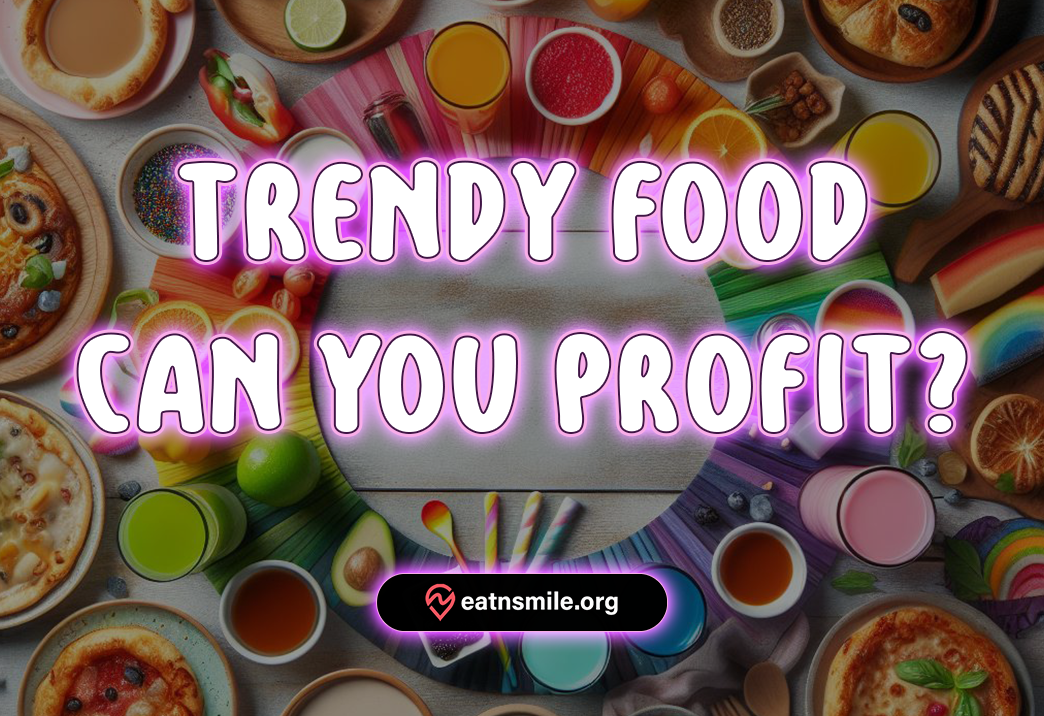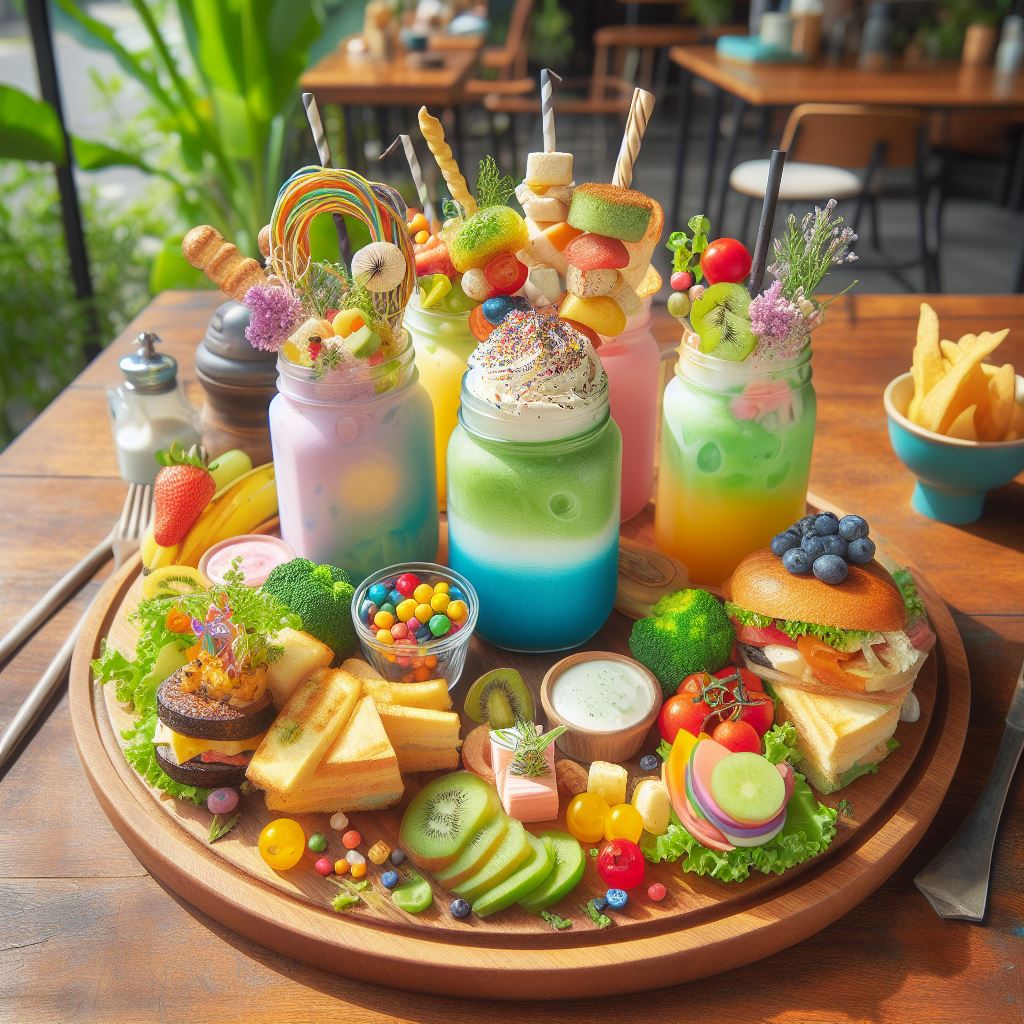
Trendy Foods’ Quick Rise and Fall: Fast Fame, Swift Farewell
Trendy foods have been a consistent part of our daily lives. Over the years, we’ve witnessed numerous foods and drinks rise and fall in popularity, often within months or even weeks. What exactly causes a food or drink to become a trend?
Trendy Food: What Makes the Cut?
The food industry remains one of the largest globally because, well, everyone needs to eat. However, as new restaurants emerge daily, the competition intensifies.
Surviving in this industry demands standing out. To achieve this, one must embrace uniqueness—whether through premium ingredients, inventive recipe combinations, or attention-grabbing cooking methods.
Trendy food encompasses various types of cuisine that surge in popularity at particular times or locations. Pinpointing when this trend emerged isn’t definitive. Yet, examining food trends from different decades offers insight into how they mirror societal and cultural shifts.
Here are some examples of how food trends changed and evolved in each decade, reflecting the social and cultural shifts of their times.
- 1970s: This decade was influenced by the health and fitness movement, the environmental awareness, and the desire for comfort food. Some of the food trends were quiche, granola, crockpot meals, and carrot cake.
- 1980s: This decade was marked by the globalization of food culture, the diversification of tastes, and the convenience of new technologies. Some of the food trends were sushi, pasta salad, kiwi fruit, and microwave popcorn.
- 1990s: This decade was characterized by the fusion of different cuisines, the popularity of breakfast foods, the emphasis on nutrition, and the indulgence in desserts. Some of the food trends were sun-dried tomatoes, bagels, smoothies, and tiramisu.
- 2000s: This decade was shaped by the influence of media and celebrities, the innovation of street food, the revival of classic flavors, and the simplicity of fresh ingredients. Some of the food trends were cupcakes, food trucks, bacon, and avocado toast.
- 2010s: This decade was driven by the social media craze, the rise of plant-based and gluten-free diets, the obsession with superfoods, and the rediscovery of fermentation. Some of the food trends were kale, quinoa, coconut water, and kombucha.
Why trendy foods get popular so fast nowadays?
In the past, creating a trendy food wasn’t as straightforward because social media and communication platforms were not as prevalent as they are today.
Conversely, with the widespread development of social media today, the creation of new culinary trends has become less challenging. The current landscape facilitates the emergence of fresh culinary trends more readily than in previous times.
Trendy foods often gain rapid popularity due to a combination of factors:
- Social Media Influence: Viral posts, food bloggers, and influencers showcase these foods, rapidly spreading their appeal to a wide audience.
- Novelty and Uniqueness: Unique ingredients, innovative cooking methods, or unconventional combinations create curiosity and excitement among consumers.
- Visual Appeal: Foods that are aesthetically pleasing or “Instagrammable” tend to catch people’s attention, encouraging them to try and share these dishes.
- Health and Wellness Trends: Foods aligned with popular diets, health trends, or wellness movements gain traction due to increased consumer focus on health-conscious choices.
- Cultural Influence: Dishes associated with specific cultures or global culinary trends attract interest as people seek diverse and authentic food experiences.
- Accessibility and Convenience: Easy access to trendy foods, whether through food delivery apps, local eateries, or food trucks, contributes to their rapid rise.
- Endorsements and Recommendations: Recommendations from celebrities, chefs, or influential figures can significantly boost a food item’s popularity and contribute to its swift rise to trendiness.
- FOMO (Fear of Missing Out): The fear of missing out on the latest food craze drives people to try these trendy foods before they lose their popularity.

Why they also fall so fast?
Reflecting on past trendy foods, it’s evident that these dishes have endured, remaining popular and widely consumed. But why?
Consider this: in a time before the widespread use of social media, the most effective form of marketing was “Word of mouth.” Patrons who enjoyed a meal at a particular restaurant would recommend it to acquaintances, encouraging them to try the food.
This implies that for a dish to gain recommendations, it had to be genuinely delicious and enticing. Beyond mere word-of-mouth promotion, customers who tried the food would return for more.
The real challenge in creating a lasting trendy food isn’t merely getting people to know about it; rather, it’s about enticing those who’ve already tried it to return. Sustained, loyal customers are the foundation of long-term and stable income.
From these observations, a significant reason for today’s trendy foods becomes apparent. They prioritize flashiness over quality, relying on vibrant colors or elaborate cooking methods to captivate curiosity.
Furthermore, social media influencers stand as a primary force behind trendy foods. In a saturated landscape where being noticed through quality isn’t enough, being the quickest becomes crucial.
The race to be the first to discover a new food often leads these influencers to overlook vital factors impacting a food’s experience, such as its quality or the establishment’s service.
Their followers, eager for novel recommendations from these idols, spark a surge in demand. Consequently, more vendors jump into the trendy food market, eventually saturating it.
However, once the curious have experienced these trendy foods and find them lacking substance beyond internet fame, they may simply say, “Well, I’ve tried that,” and move on. Once curiosity is satisfied, there’s often no return, leading to the swift demise of a trendy food.

Should you follow the trend?
You might have guessed that this question doesn’t have a straightforward answer. Not every trend arrives and departs swiftly. So, the real question is: “Which trend should you follow?” as a food vendor.
To arrive at this conclusion, you can experience the food yourself and make assessments regarding:
- Why did this particular dish become viral?
- Who are your target customers, and does this trend align with them?
- Are you suitable to follow this trend?
- Additionally, location plays a pivotal role.
For instance, around October 2023 in Vietnam, there was a trendy beverage called “Hand-Pounded Guangdong Lemon Tea” that gained immense popularity through TikTok.
This tea uses lemons sourced from Guangdong. Vendors would continuously pound the lemon with a pestle, releasing its essential oils and juice, resulting in a distinct flavor profile.
Initially, this drink skyrocketed in popularity, attracting countless curious consumers. Consequently, numerous vendors jumped on board hoping to have a piece of the pie.
However, as quickly as it rose to fame, it became outdated. The key to its virality wasn’t its taste or the use of rare ingredients but rather the visual representation, specifically, the action of hand-pounding.
TikTok videos garnering millions of views often portrayed an attractive, robust man vigorously pounding the lemon, satisfying both visual and auditory senses. Hence, if your hand-pounding wasn’t visually appealing, you lost the battle. This lemon tea wasn’t genuinely delightful enough to bring customers back for its taste.
The consequence of not carefully considering the essence of this trending beverage is that many vendors suffer substantial losses. Just the other day, the place was packed with customers to the point of struggling to keep up with demand, but now there isn’t a single person in sight. Only those who were quick to jump onto this trend profited.
Moreover, many beverage shops, whose regular customers preferred a quiet atmosphere, have lost their loyal clientele due to following the trend. The preparation of this hand-pounded tea creates a lot of noise, causing them to lose their cherished customers.
Through this example, one can glean insights into which trends are worth pursuing.
EatnSmile: your go-to site for food reviews!
EatnSmile endeavors to establish the pioneering review platform on Web3, a decentralized web utilizing blockchain technology and smart contracts. Users are empowered to openly express their genuine feedback regarding food and dining establishments while reaping rewards in the form of cryptocurrency tokens.
Have you tasted the latest trendy foods? Share your thoughts on EatnSmile and collect your rewards!

More from us:
5 Fast And Flavorful Recipes For Air Fryer – EatnSmile
Coffeeless Coffee: Innovative Substitute Or Mere Imitation? – EatnSmile




